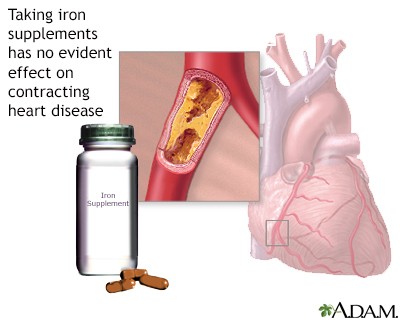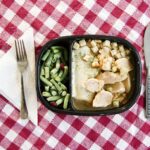Iron is an essential mineral crucial for various bodily functions, including the production of hemoglobin and myoglobin. Since our bodies cannot produce iron, it’s vital to obtain it through our diet. This article will explore the best food sources of iron, how to enhance its absorption, and the consequences of both iron deficiency and excess.
The Importance of Iron
Iron plays a critical role in transporting oxygen throughout the body. Hemoglobin, an iron-containing protein in red blood cells, carries oxygen from the lungs to the tissues. Myoglobin, found in muscle cells, stores oxygen for muscle use. Without adequate iron, the body cannot produce enough hemoglobin and myoglobin, leading to fatigue and other health problems.
Top Food Sources of Iron
Iron exists in two forms: heme and non-heme iron. Heme iron, found in animal products, is more easily absorbed by the body than non-heme iron, which is found in plant-based foods.
Excellent Sources of Heme Iron
- Lean Red Meat: Beef is one of the richest sources of heme iron.
 Lean red meat for iron
Lean red meat for iron
- Poultry (Dark Meat): Dark meat poultry, such as chicken thighs and drumsticks, contains more iron than white meat.
- Seafood: Oysters, clams, tuna, and salmon are excellent sources of iron.
- Organ Meats: Liver is extremely high in iron and other essential nutrients.
- Eggs: Especially the yolks, provide a good source of iron.
Good Sources of Non-Heme Iron
-
Legumes: Dried beans, lentils, soybeans, kidney beans, and lima beans are plant-based sources of iron.
-
Dried Fruits: Prunes, raisins, and apricots offer a convenient way to boost iron intake.
-
Nuts and Seeds: Almonds, Brazil nuts, pumpkin seeds, and sunflower seeds contribute to iron intake.
-
Dark Leafy Greens: Spinach, kale, collard greens, and dandelion greens are nutritious sources of non-heme iron.
-
Fortified Foods: Iron-fortified cereals, breads, and pastas can help increase iron consumption, especially for those who don’t eat meat.
-
Whole Grains: Wheat, millet, oats, and brown rice contain iron, but it’s important to note that the iron absorption from these sources is generally lower compared to heme iron.
Enhancing Iron Absorption
Several strategies can improve the absorption of non-heme iron:
-
Combine with Vitamin C: Consuming foods rich in vitamin C, such as citrus fruits, strawberries, tomatoes, and potatoes, alongside iron-rich plant-based foods significantly enhances iron absorption.
-
Pair with Heme Iron: Eating a small amount of meat, fish, or poultry with plant-based iron sources can increase iron absorption by up to three times.
-
Cook in Cast-Iron Skillets: Cooking foods, especially acidic foods like tomato sauce, in a cast-iron skillet can increase the iron content of the food.
Factors that Inhibit Iron Absorption
Certain substances can interfere with iron absorption:
-
Tea and Coffee: Tannins in tea and coffee can bind to iron and reduce its absorption. Avoid drinking these beverages with meals.
-
Calcium: High doses of calcium supplements or consuming large amounts of dairy products with meals can inhibit iron absorption.
-
Phytates: Found in legumes, whole grains, and nuts, phytates can reduce iron absorption. Soaking or fermenting these foods can help reduce their phytate content.
Iron Deficiency: Risks and Symptoms
Insufficient iron intake can lead to iron deficiency anemia, a condition characterized by a lack of red blood cells or hemoglobin.
Those at risk for iron deficiency include:
- Menstruating women, especially those with heavy periods.
- Pregnant women.
- Infants and young children who do not consume enough iron-rich foods.
- Long-distance runners.
- Individuals with gastrointestinal disorders that affect nutrient absorption.
- Frequent blood donors.
Symptoms of iron deficiency anemia may include:
- Fatigue.
- Shortness of breath.
- Headache.
- Dizziness.
- Pale skin.
- Brittle nails.
- Irritability.
Iron Overload: Risks and Symptoms
While iron deficiency is a common concern, excessive iron intake can also be harmful. Hemochromatosis, a genetic disorder, causes the body to absorb too much iron.
Symptoms of iron overload may include:
- Fatigue.
- Joint pain.
- Abdominal pain.
- Liver damage.
- Heart problems.
- Diabetes.
Recommended Daily Iron Intake
The recommended daily allowance (RDA) for iron varies depending on age, sex, and life stage.
- Infants: 0.27 mg/day (0-6 months), 11 mg/day (7-12 months)
- Children: 7 mg/day (1-3 years), 10 mg/day (4-8 years)
- Males: 8 mg/day (9-13 years), 11 mg/day (14-18 years), 8 mg/day (19+ years)
- Females: 8 mg/day (9-13 years), 15 mg/day (14-18 years), 18 mg/day (19-50 years), 8 mg/day (51+ years)
- Pregnant women: 27 mg/day
- Lactating women: 9 mg/day (19-30 years), 10 mg/day (14-18 years)
Consult with a healthcare professional or registered dietitian to determine the appropriate iron intake for your individual needs.
Conclusion
Incorporating a variety of iron-rich foods into your diet is essential for maintaining optimal health. By understanding the different types of iron and how to enhance its absorption, you can ensure that your body receives the iron it needs to function properly. If you suspect you may have an iron deficiency or overload, consult with a healthcare professional for proper diagnosis and treatment.
References
-
Mason JB, Booth SL. Vitamins, trace minerals, and other micronutrients. In: Goldman L, Schafer AI, eds. Goldman-Cecil Medicine. 26th ed. Philadelphia, PA: Elsevier; 2020:chap 205.
-
Maqbool A, Parks EP, Shaikhkhalil A, Panganiban J, Mitchell JA, Stallings VA. Nutritional requirements. In: Kliegman RM, St. Geme JW, Blum NJ, Shah SS, Tasker RC, Wilson KM, eds. Nelson Textbook of Pediatrics. 21st ed. Philadelphia, PA: Elsevier; 2020:chap 55.
-
National Institutes of Health website. Iron: fact sheet for health professionals. ods.od.nih.gov/factsheets/Iron-HealthProfessional/. Updated April 5, 2022. Accessed February 21, 2023.
